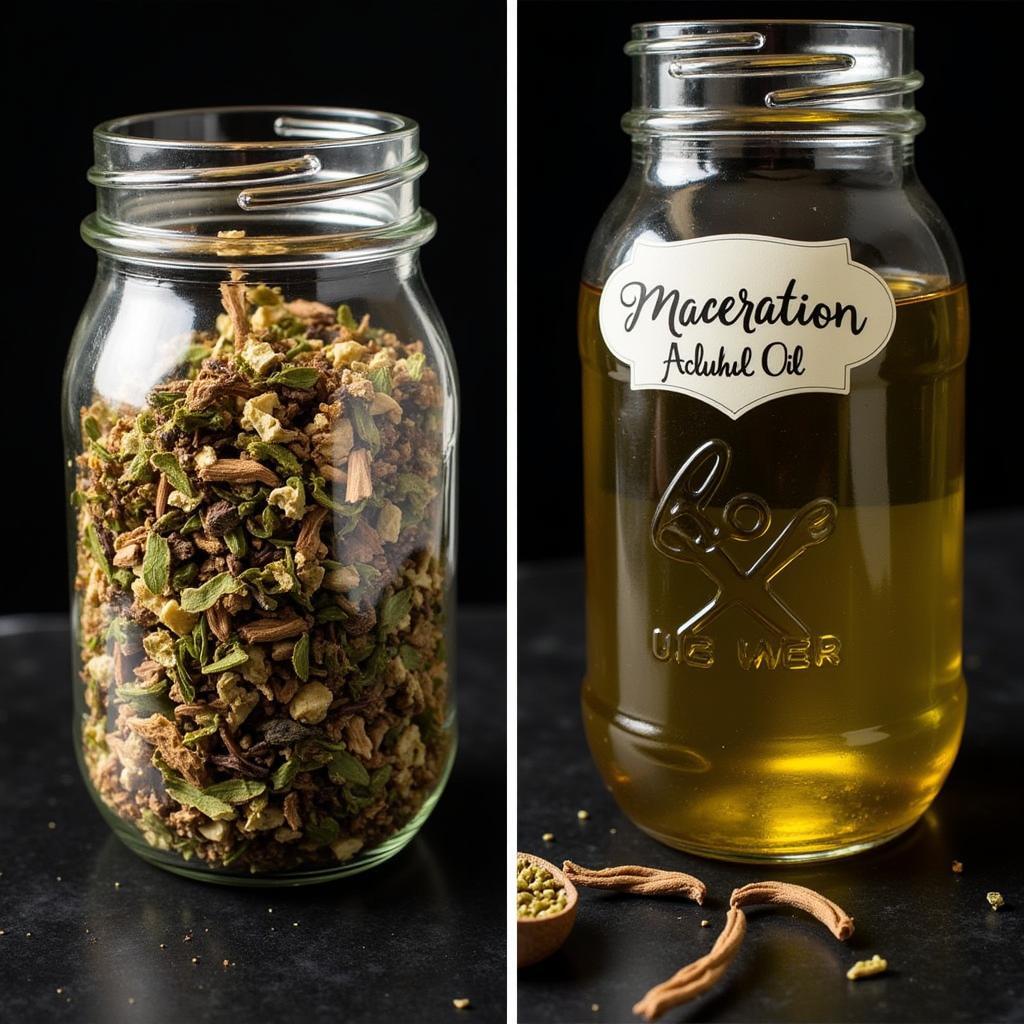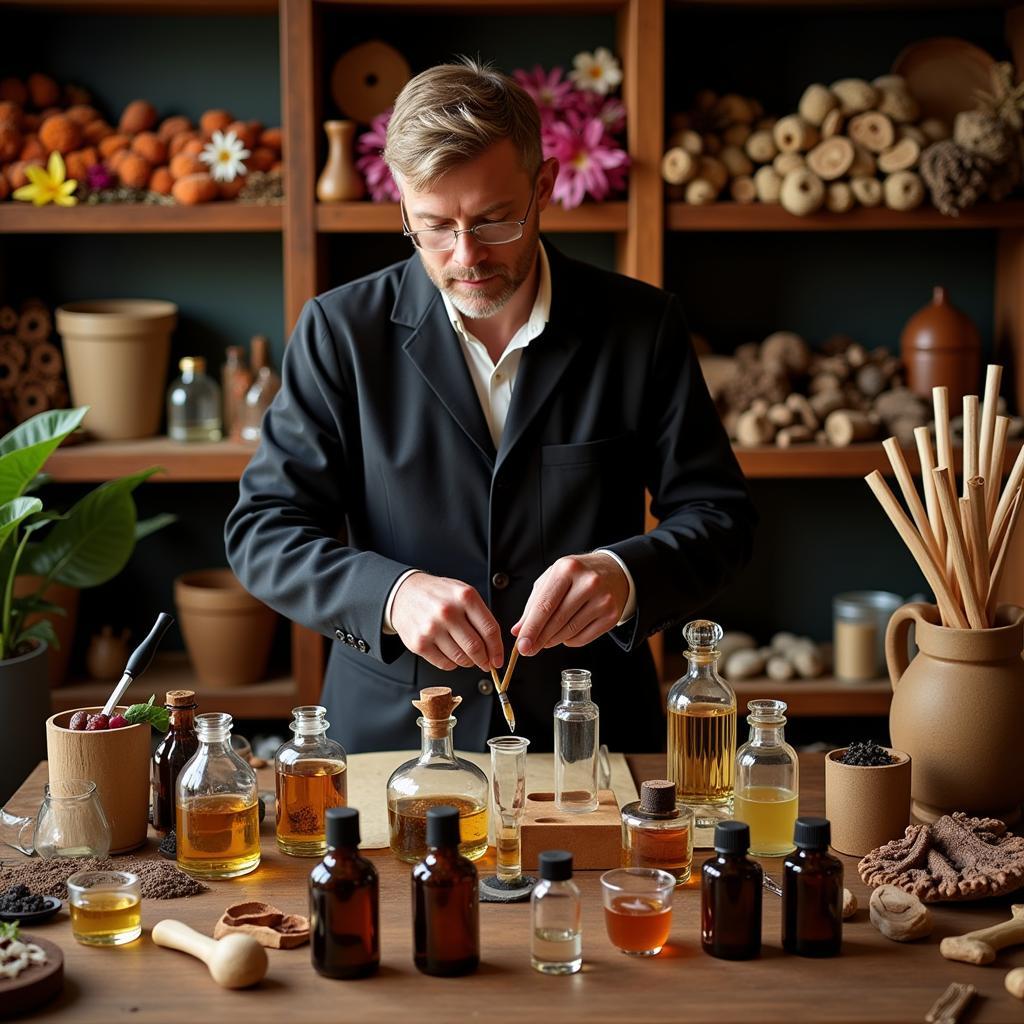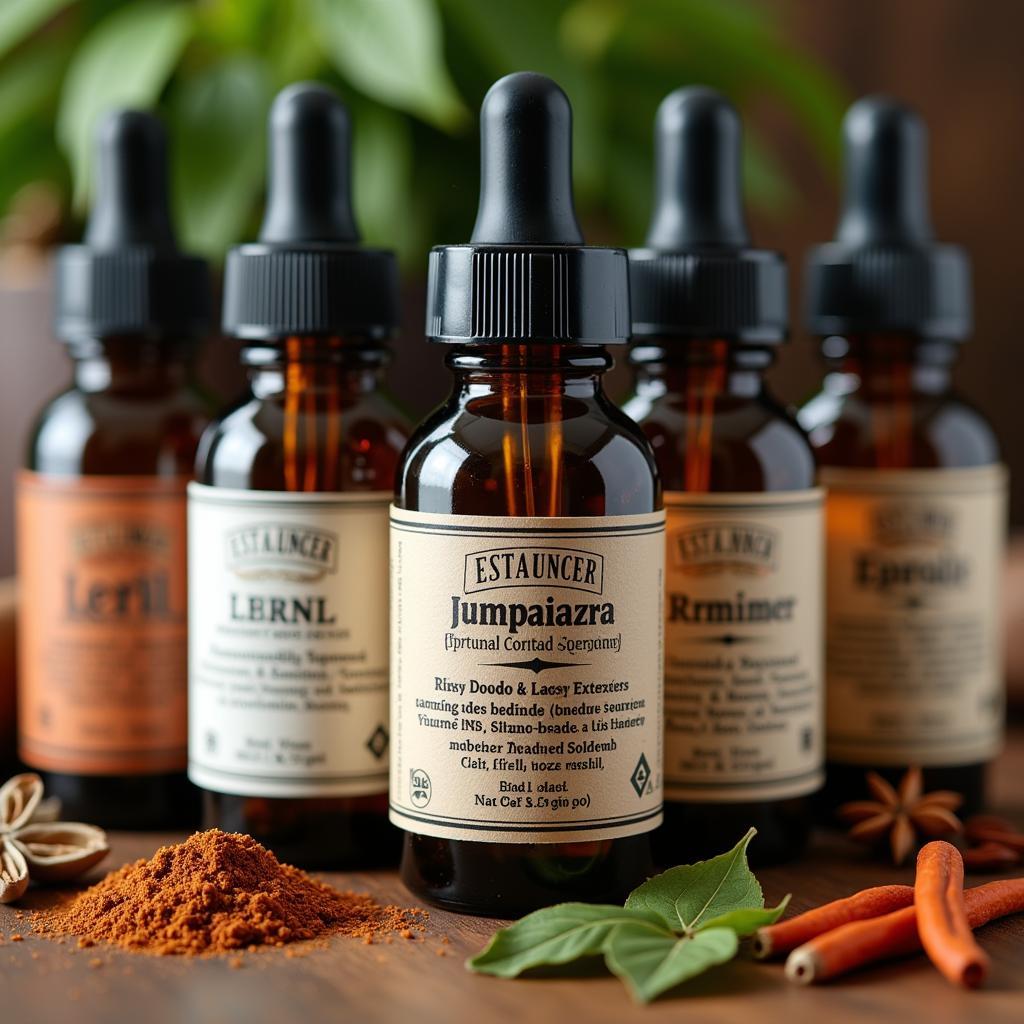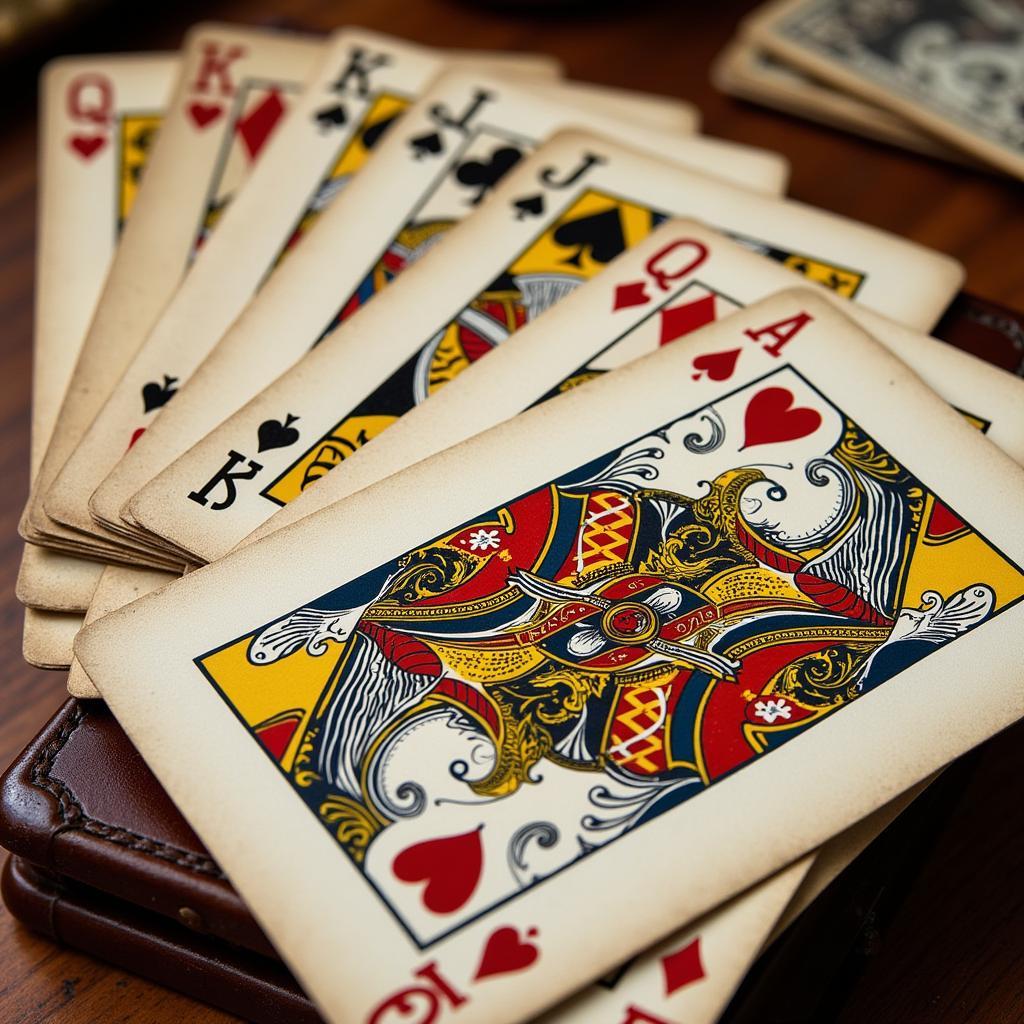Mastering the Art of Extract Making
The Art Of Extract Making is a fascinating blend of science, tradition, and creativity. It involves capturing the essence of a raw material, be it a fragrant flower, a pungent herb, or a flavorful fruit, and transforming it into a concentrated form. This allows us to harness the power of nature for a variety of applications, from flavoring our favorite dishes to creating perfumes and even medicinal remedies. We’ll explore the nuances of extract making, delving into its history, the diverse methods employed, and the multitude of uses for these potent concoctions.
What exactly is an extract? It’s a substance obtained by separating a desired component from a raw material using a solvent. This solvent, which can be water, alcohol, oil, or even CO2, acts as a carrier, dissolving and extracting the target compounds. The resulting solution is then concentrated to create a potent essence. Think of it as bottling sunshine, capturing the very soul of a botanical in a tiny vial. The art of extract making has a rich history, dating back centuries. From ancient apothecaries creating herbal tinctures to modern perfumers crafting exquisite fragrances, the pursuit of capturing nature’s essence has driven innovation and inspired countless creations.
If you are interested in creating art with the help of AI, check out the ai line art generator.
Exploring Different Extraction Methods
The methods used in the art of extract making vary depending on the raw material and the desired outcome. Some common techniques include:
- Maceration: This simple method involves soaking the raw material in a solvent for an extended period, allowing the target compounds to dissolve. Think of steeping tea; it’s a form of maceration.
- Percolation: This process involves slowly passing a solvent through a bed of the raw material, extracting the desired compounds as it flows. This method is commonly used in coffee brewing.
- Supercritical Fluid Extraction (SFE): This advanced technique utilizes CO2 under high pressure and temperature to extract compounds. SFE is known for its efficiency and ability to produce clean, solvent-free extracts.
- Distillation: This method separates compounds based on their boiling points, making it ideal for extracting volatile oils. This is the process used to create essential oils.
 Maceration Process for Extract Making
Maceration Process for Extract Making
The Art of Extract Making: Applications and Uses
Extracts find applications in a vast array of industries, including:
- Culinary Arts: Extracts are used to enhance the flavor of food and beverages, adding depth and complexity to recipes. Vanilla extract, almond extract, and peppermint extract are just a few examples.
- Perfumery: The fragrance industry relies heavily on extracts, capturing the aromatic essence of flowers, woods, and spices to create captivating perfumes.
- Cosmetics: Extracts are incorporated into skincare and cosmetic products for their beneficial properties. Aloe vera extract, for instance, is known for its soothing and moisturizing qualities.
- Herbal Medicine: Extracts have been used for centuries in traditional medicine to create tinctures and remedies.
Learn more about different types of art by exploring the world of tequila. Check out dos artes tequila blanco and arte tequila.
 Extract Making in Perfumery
Extract Making in Perfumery
Why is the Art of Extract Making Important?
The art of extract making allows us to harness the power of nature in a concentrated form. This offers several benefits:
- Potency: Extracts are far more potent than their raw counterparts, delivering a concentrated dose of flavor, aroma, or active compounds.
- Shelf Life: Extracts often have a longer shelf life than the raw materials, allowing us to preserve and enjoy the essence of seasonal ingredients year-round.
- Versatility: Extracts can be easily incorporated into a wide range of products and applications, from food and beverages to cosmetics and medicines.
“The true art of extract making lies in understanding the delicate balance between science and nature,” says renowned herbalist Dr. Amelia Green. “It’s about respecting the raw material and coaxing out its hidden treasures.”
How to Choose High-Quality Extracts?
When selecting extracts, look for the following:
- Purity: Choose extracts that are free from additives, fillers, and artificial flavors.
- Source: Consider the source of the raw material. Organically grown and sustainably harvested ingredients are often preferred.
- Concentration: Check the concentration of the extract. A higher concentration typically indicates a more potent product.
 Choosing High-Quality Extracts
Choosing High-Quality Extracts
The Art of Extract Making: A Journey of Discovery
The art of extract making is a journey of discovery, a fascinating exploration of the natural world and its hidden treasures. Whether you’re a culinary enthusiast, a perfume aficionado, or simply curious about the power of plants, delving into the world of extracts is sure to ignite your creativity and inspire new possibilities. Explore the possibilities with the art of extract making and unlock the secrets of nature’s bounty.
Have you ever wondered about the art of espionage? You might enjoy harry potter and the art of spying. It offers a unique perspective on the topic.
FAQ
- What is the difference between an extract and an essential oil?
- How do I store extracts properly?
- Can I make extracts at home?
- What are some common uses for vanilla extract?
- Where can I buy high-quality extracts?
- Are there any safety precautions I should take when using extracts?
- What are the benefits of using natural extracts over artificial flavors?
For further assistance, please contact us at Phone Number: 02462573573, Email: [email protected] Or visit us at Savico Megamall, 7-9 Đ. Nguyễn Văn Linh, Gia Thụy, Long Biên, Hà Nội 10000, Việt Nam. We have a 24/7 customer service team.



